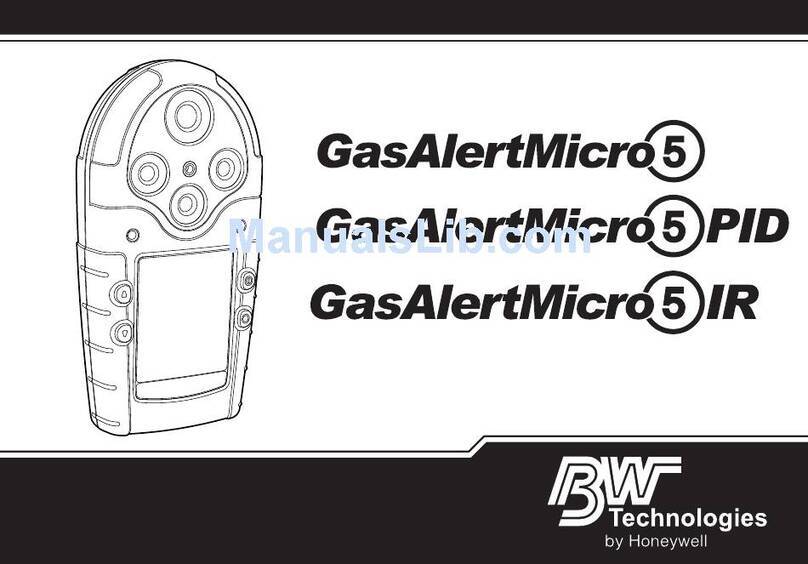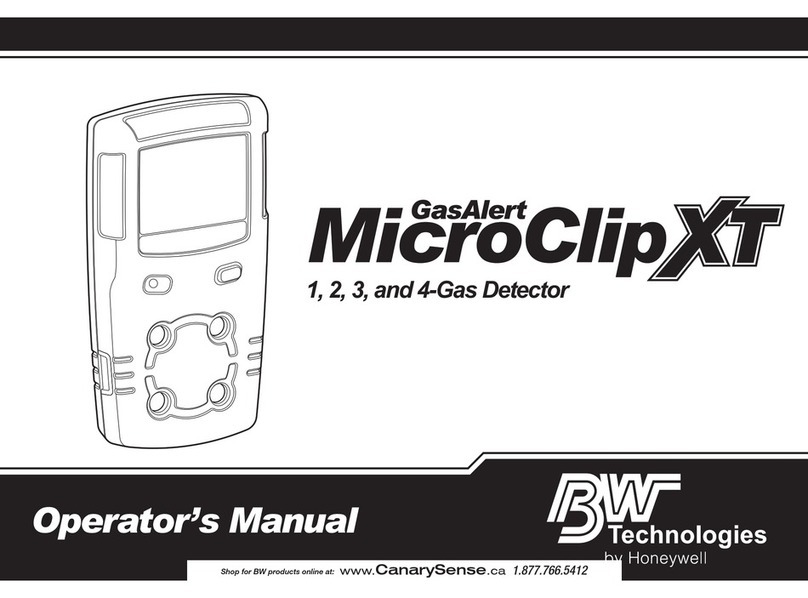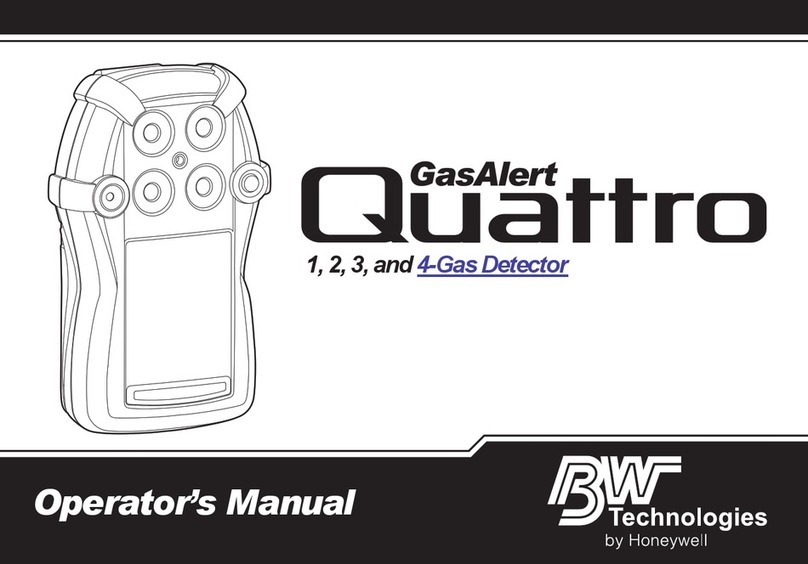
Subject: BW Personal Gas Monitors Number: RGP0011A Rev: 1
Warning – Uncontrolled when printed unless used for signoff! The current version of this document is kept in LiveLink.
References • Gas Alert Clip Instruction Manual
• BW Clip Instruction Manual
• RGS0008A Personal Gas Detection for Hazardous Atmospheres
• LMS0095A H2S Standard
• Oil Sands Onboarding training
• Oil Sands Gas Detection classroom course
Definitions The following terms and acronyms are used in this procedure:
15-Minute
Occupational
Exposure Limit or
Short Term
Exposure Limit
(STEL)
A 15-minute time weighted average of airborne concentration of a
contaminant to which it is believed that workers can be continuously
exposed for a short period of time without suffering from irritation,
chronic or irreversible tissue damage, dose-rate dependent toxic
effects, or narcosis of sufficient degree to increase the likelihood
of accidental injury, impaired self-rescue or materially reduced
work efficiency.
Bump Test A field test conducted according to Suncor schedule. The test
ensures the detector is working properly.
During a bump test, the detector is exposed to a known concentration
of calibration gas. If the detector responds within predetermined
limits, the instrument is ready for use.
Ceiling Occupational
Exposure Limit
(Ceiling)
The concentration of a substance that must not be exceeded at
any time. The limit is indicated by a “C” in the column entitled “15
minute or ceiling occupational exposure limit” in Schedule 1,
Table 2 of the Alberta Occupational Health & Safety Code.
Immediately
Dangerous to Life or
Health (IDLH)
Circumstances in which the atmosphere is deficient in oxygen or
the concentration of a harmful substance in the atmosphere:
• is an immediate threat to life
• may affect health irreversibly
• may have future adverse effects on health
• may interfere with a worker’s ability to escape from a
Lower Explosive
Limit (LEL) The lower value of the range of concentrations of a substance at
which, in a mixture with air, it may ignite.
Occupational
Exposure Limit
(OEL)
An upper limit of airborne concentrations of various contaminants
in the workplace. Typically, Occupational Exposure Limits are
airborne concentrations averaged over an 8 hour work day and
are reported as time weighted average concentrations.
Self-Test This test is performed by pressing the test button (blue button)
once every 24 hours. This test verifies proper functioning of the
electronic circuitry, battery and the visual alarm lights. A self-test
does not verify the sensor’s response to target gas.
Time Weighted
Average Exposure
(TWA)
The average exposure to a contaminant or condition to which
workers may be exposed without adverse effect over a period of
time.
































